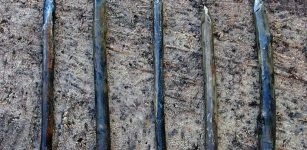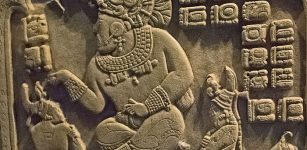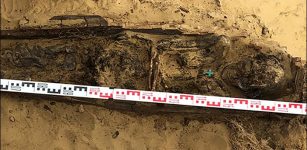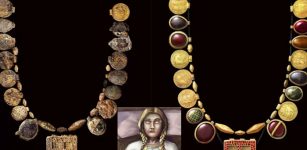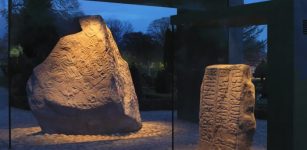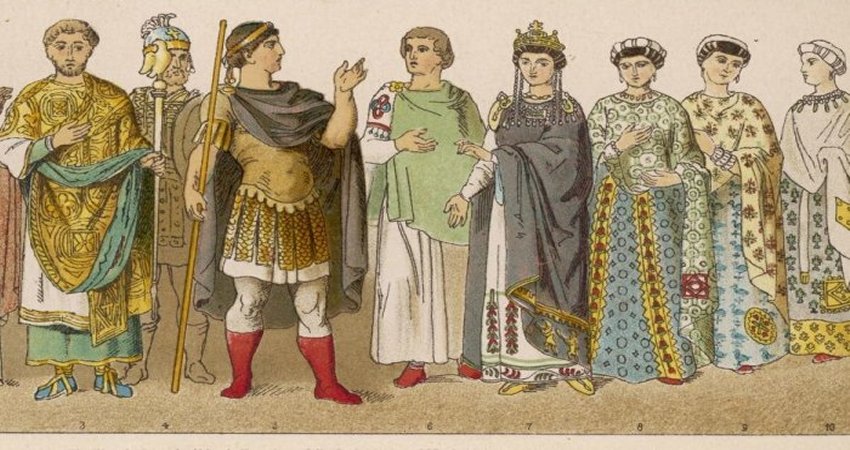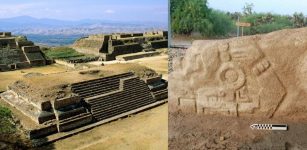Mystery Of The ‘Griffin Warrior’ Grave: Ancient Greek Lord Of The Rings Discovery
MessageToEagle.com – Archaeologists call it the “find of a lifetime” and there is no doubt the precious ancient artifacts discovered in the so-called “Griffin Warrior” grave can shed more light on ancient Greek history.
The 3,500-year-old grave of a Bronze Age warrior contains over 2,000 ancient objects. When scientists opened the tomb they found remarkable jewelry, weapons and riches. Four golden rings are particularly interesting as they provide researchers with valuable information about the origins of Greek civilization.
The discovery was made by scientists from the University of Cincinnati who found the ancient tomb near the city of Pylos, an ancient city on the southwest coast of Greece.
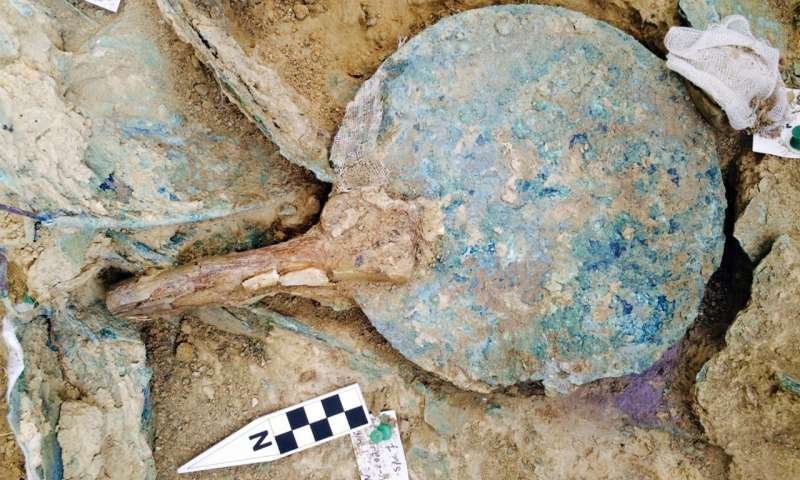
Inside they discovered the well-preserved remains of what is believed to have been a powerful Mycenaean warrior or priest in his early- to mid-30s who was buried around 1500 B.C. near the archeological excavation of the Palace of Nestor.
It soon became very obvious this was by no means an ordinary archaeological discovery and the Greek Culture Ministry quickly announced it was the “most important to have been discovered [in continental Greece] in 65 years.”
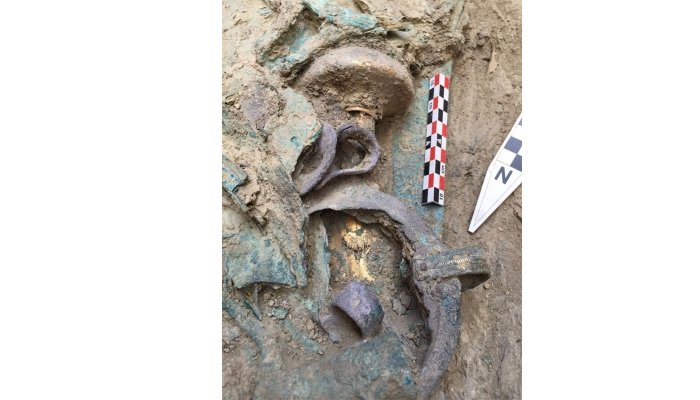
The skeleton was dubbed the “Griffin Warrior” for the discovery of an ivory plaque adorned with a griffin—a mythical beast with the body of a lion and the head and wings of an eagle—buried with him.
The ancient tomb contained more than 2,000 objects arrayed on and around the body, including four solid gold rings, silver cups, precious stone beads, fine-toothed ivory combs and an intricately built sword, among other weapons.
How Could A Greek Have So Many Ancient Artifacts Created By The Mycenaean Civilization?
Eaxaminations of the objects revealed that a significant number of the artifacts found in the warrior’s grave were made by Minoans, a culturally dominant civilization to the Mycenaeans that arose on the large island of Crete, southeast of Pylos.
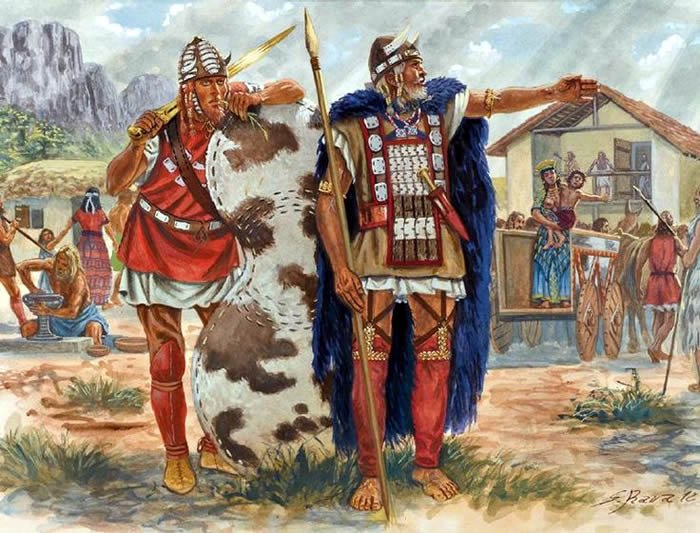
What researchers could not understand was how it was possible for a man from the Greek mainland accumulate such a large cache of Minoan-made riches?
One longstanding theory is that the Greeks of the Griffin Warrior’s era—dubbed Mycenaean after their principal city, Mycenae—are thought to have imported or robbed the riches from the affluent non-Greek Minoan civilization on Crete.
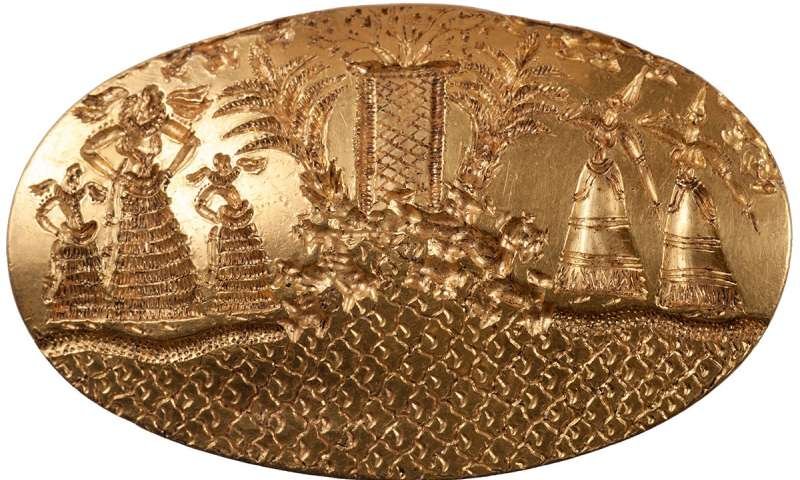
“The grave was right around the time the Mycenaeans were conquering the Minoans. We know that there were extensive raids and shortly after the date of our grave, Minoan-Crete fell to the Mycenaeans,” Shari Stocker, a senior research associate in UC’s Department of Classics said.
Stocker and Jack Davis, the university’s Carl W. Blegen chair in Greek archaeology, say that the artifacts found in the warrior’s grave suggest a far greater cultural sharing between the ancient civilizations than just mere plunder. Instead, they insist, the carefully selected and hand-placed items reveal much about the heart of the relationship of the burgeoning mainland Greek culture to the more refined culture of Crete.
Discovery Of Four Remarkable Golden Rings
The most intriguing ancient objects are the four gold signet rings bearing highly detailed Minoan iconography offers one of the best examples of this Mycenaean-Minoan cultural transfer and paints a more vivid picture of early Greek society, the researchers say.
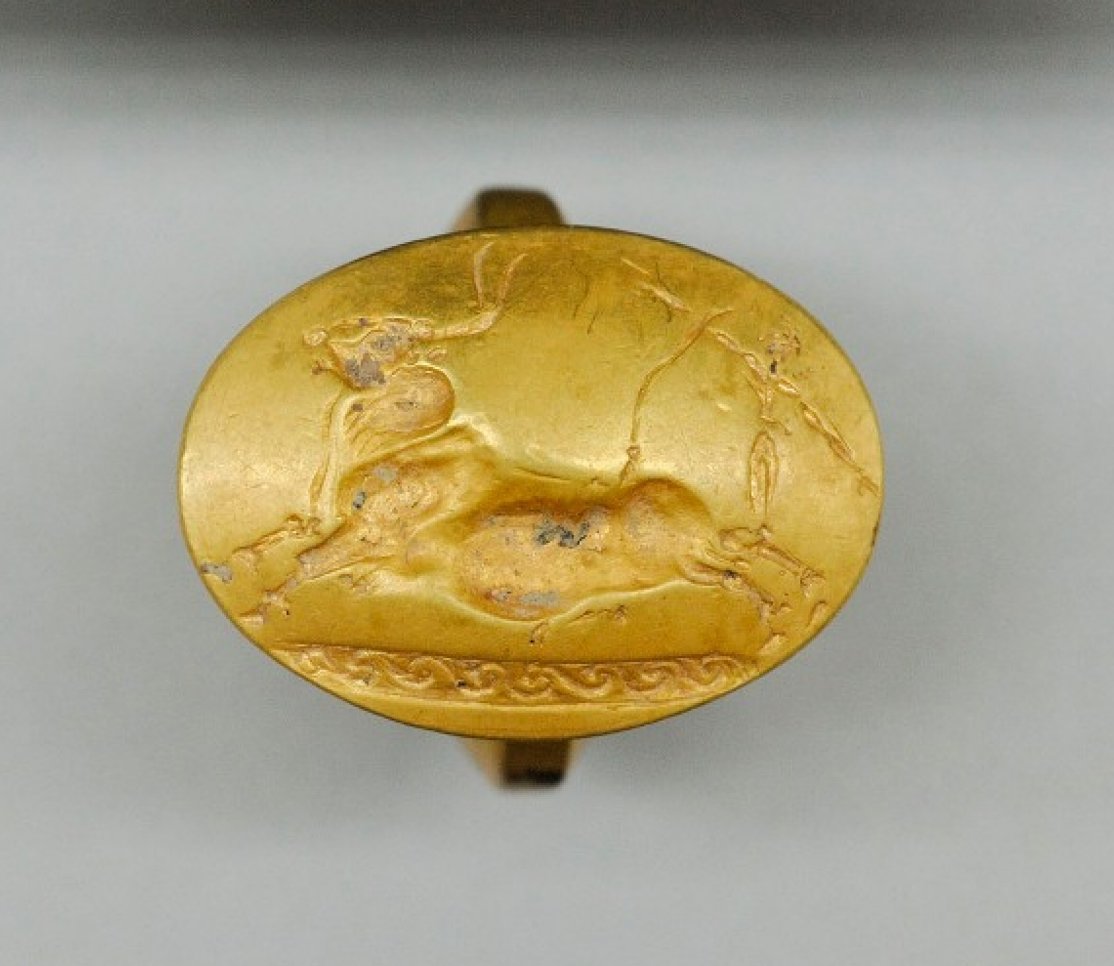
The rings—three of which the researchers are unveiling for the first time on Oct. 6—are crafted from multiple sheets of gold and feature iconographical references seen elsewhere in Minoan art and religious culture.
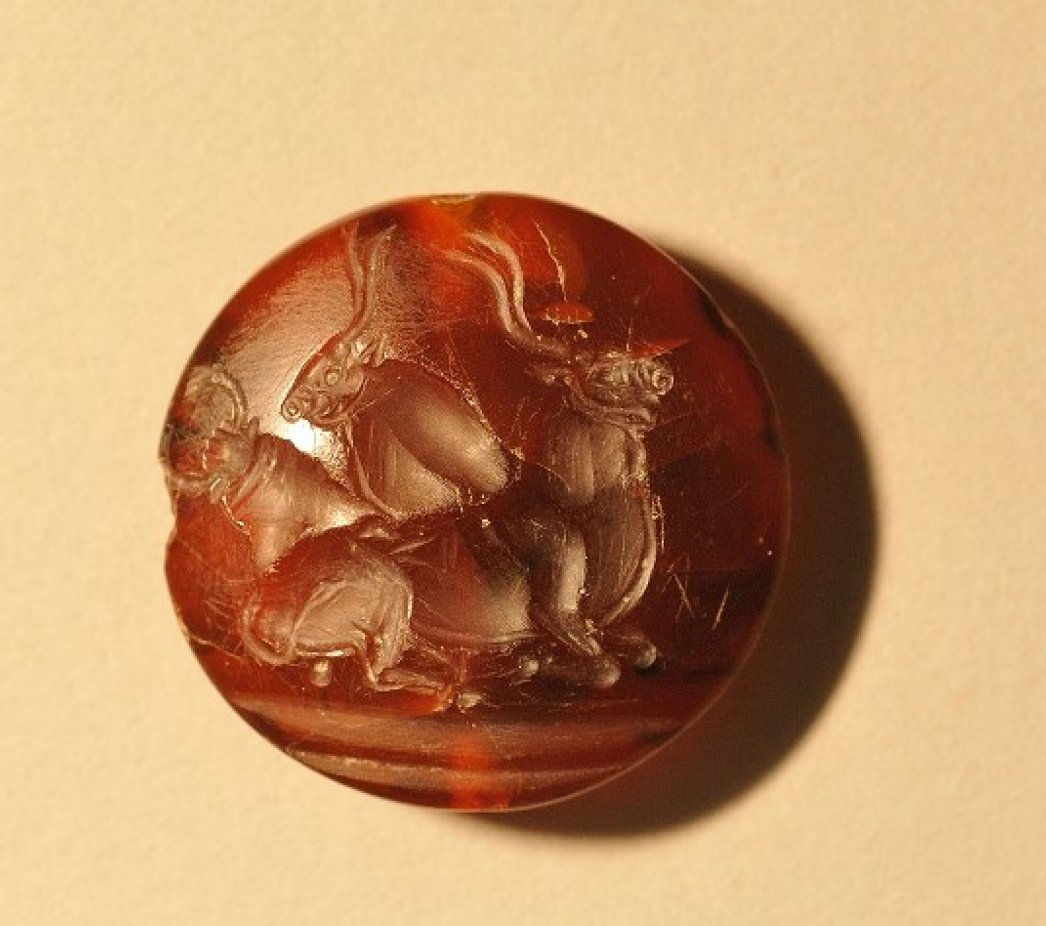
- The first ring, revealed after the excavation’s completion last fall, shows a scene of a bull leaping—reminiscent of contests in which toreadors would literally leap over bulls in a show of sport and athletic prowess—a common motif seen in Minoan imagery.
- The second ring, the second largest gold signet ring known in the Aegean world, shows five elaborately dressed female figures gathered by a seaside shrine.
- A third ring depicts a female figure, thought to be a goddess, holding a staff and flanked by two birds atop a mountain glen.
- The final ring shows a woman presenting a bull’s horn offering to a goddess holding a mirror and seated on a high-backed throne atop of which is perched a bird.
Cultural meanings aside, the rings themselves are a remarkable find simply for the elaborate attention to detail and artisan workmanship, say Stocker and Davis.
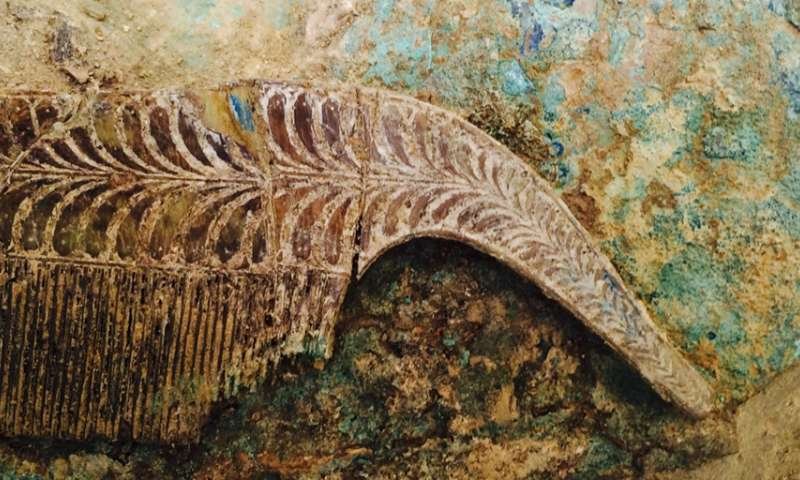
“They’re carving these before the microscope and electric tools,” marveled Stocker. “This is exquisite workmanship for something so tiny and old and really shows the skill of Minoan craftsmen.”
“It shows a level of superb craftsmanship that just isn’t found on these other rings,” said Davis, referring to the rings of Minos and Nestor, long the subjects of intense scrutiny by experts who question their authenticities, in part, due to the high level of detail on them.
But the discovery of the Minoan-style rings in a Mycenaean warrior’s grave further left the research team scratching their heads: Did the Mycenaeans understand what they were taking from the Minoans and the concepts behind the iconography?
After a year of careful examination of the grave’s artifacts, Davis and Stocker now say yes.
See also:
Did The Amazons Really Exist? – Truth Behind Myths Of Fierce Female Warriors
Rare Warrior Tomb Filled With Bronze Age Treasures Unearthed At Pylos, Greece
Possible Ancient Victims Of A Mass Execution Discovered In Greece
“People have suggested that the findings in the grave are treasure, like Blackbeard’s treasure, that was just buried along with the dead as impressive contraband,” said Davis. “We think that already in this period the people on the mainland already understood much of the religious iconography on these rings, and they were already buying into religious concepts on the island of Crete.”
Sacred Ancient Symbols
“They’re not just going there and robbing a jewelry store,” echoed Stocker. “They’re thinking about it and selecting specific items for inclusion in the burial.”
The researchers point to other items in the grave that reference religious and cultural motifs seen both in the rings and Minoan imagery.
- A mirror found above the Griffin Warrior’s legs may relate to the fourth ring, in which a seated goddess is portrayed holding a mirror. The mirror’s placement in the grave, the researchers theorize, suggest that it holds special significance to the Mycenaeans while the presence of a half-dozen combs suggest a ritual practice of hair-combing before battle.
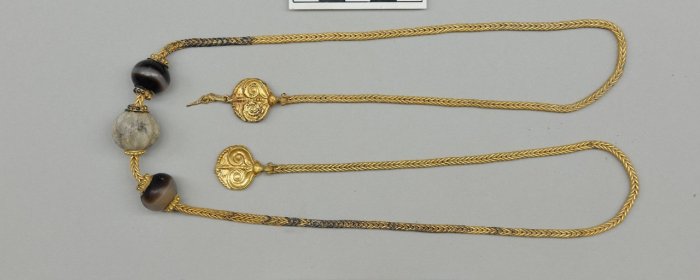
- The bull, a sacred symbol to the Minoans, can also be seen in Mycenaean imagery. In the third ring, a goddess is featured holding a horned staff while the fourth ring shows an offering to the goddess of a bull’s horn. The bull is also featured in the first ring, suggesting the horns may have come from a ritualistic slaughtering following a bull-leaping event. Stocker and Davis say it is no coincidence that the Griffin Warrior was found buried with a bronze bull’s head staff capped by prominent horns, which were likely a symbol of his power and authority.
The Griffin Warrior’s tomb contains just one skeleton, which researchers say allows them to form a better picture of who he was, why these specific items were selected to accompany him on his journey to the underworld and what those discoveries reveal about the dawn of European civilization.
MessageToEagle.com

